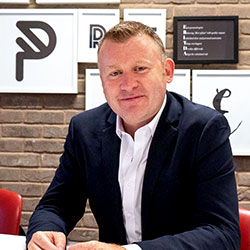‘Having larger OOH cos will help industry get more traction’: Phil Hall
By Rajiv Raghunath - September 04, 2019
Phil Hall, the new Co-Managing Director of Ocean Outdoor, UK, talks about the shape of things to come for the OOH business in the coming years
 You have had a long stint with MediaCom UK before joining Ocean Outdoor. What was the key motivation for you to join the OOH industry?
You have had a long stint with MediaCom UK before joining Ocean Outdoor. What was the key motivation for you to join the OOH industry?
The motivation that kept me at MediaCom is exactly the same as the one that’s drawn me to Ocean: the opportunity to work in a successful business that’s growing fast within a changing environment. I believe there’s a huge amount of opportunity in OOH. All of the change we’re seeing, whether it be advertising opportunities, consumer experience, use of data, measurement or consolidation is positive for our sector. OOH is obviously a long-established and successful industry, but it’s the potential for further innovation and growth that’s really motivated me to join. I’m excited for the future
In recent years, the OOH industry has seen consolidation of businesses, particularly in the UK, through mergers & acquisitions. Looking ahead, how do you see the consolidation helping OOH gain a larger share of the ad spends?
I think consolidation will help grow the medium. Scale can be important in the media industry and having larger OOH companies will help the sector get more traction with media agencies and clients. This traction is important – we need to keep OOH top of mind and make sure everyone is aware of what we can deliver. One of the main insights I took from my time on agency-side was the disconnect between consumer behaviour and advertising budget.
We’re fortunate to have some exceptional media planners in the UK, but it’s normal to see a pretty significant lag between new advertising opportunities and spend. TV VOD and Podcasts are just a couple of examples of where this has happened. There are a number of factors causing this, ranging from ingrained behaviour to lack of measurement or lack of suitable advertising environments, but in all cases growth in ad spend is slower than it should be.
OOH has made giant strides since the turn of the century and offers so much more to clients than it did before. There hasn’t really been a corresponding growth in spend though and my hope is that consolidation will lead to louder voices promoting OOH.
Collaboration is key though. If consolidation leads to larger, more powerful OOH media owners banging heads then we’ll have missed a trick and will be fighting over the same budgets rather than growing our industry.
Today, with networked digital OOH do you see much scope for geographical expansion of Ocean’s business with presence in multiple overseas markets?
Absolutely. Ocean’s ethos of Digital Cities for Digital Citizens is just as relevant overseas as it is here. Aside from the OOH companies we’ve bought in the Netherlands, we’ve forged valuable relationships in other markets through our Alliance Network.
It being said that OOH firms of the future will function like data companies. If so, the OOH firms would need to undergo massive organisational restructuring. Do you see this coming?
I think there’s a huge difference between a data company and a company that uses data intelligently to enhance its product. I believe that the primary function of OOH businesses is (and should always be) to provide a quality environment for advertisers. We use data to enable targeting, provide relevance and engage consumers. It’s an important part of what we do and will always be part of Ocean’s offering, but we’re not a data company and have no plans to be.
Ocean has been undertaking research on the outcomes of full motion DOOH campaigns. Do you see full motion DOOH gaining further ground in the coming times?
I think it’s certain that full motion DOOH will gain ground and it’s happening quickly. Clients want to showcase their creative work in high-quality, brand-safe environments where they can effectively reach mass audiences. DOOH ticks all those boxes and full motion takes it to another level. It doesn’t just look good either – it works.
Our neuroscience research shows that full motion is 2.5 times more impactful in terms of memory encoding than static advertising. Brands want consumers to be engaged and interested in their messaging and full motion is a great way of achieving that. When integrated with technology the impact is further enhanced. Our research showed engagement levels 8 times higher than static advertising. That’s a huge uplift, demonstrating that the days of OOH being a passive medium are long gone. We can grab attention and engage and interest our clients’ consumers.
For more updates, subscribe to media4growth newsletter - Click here

